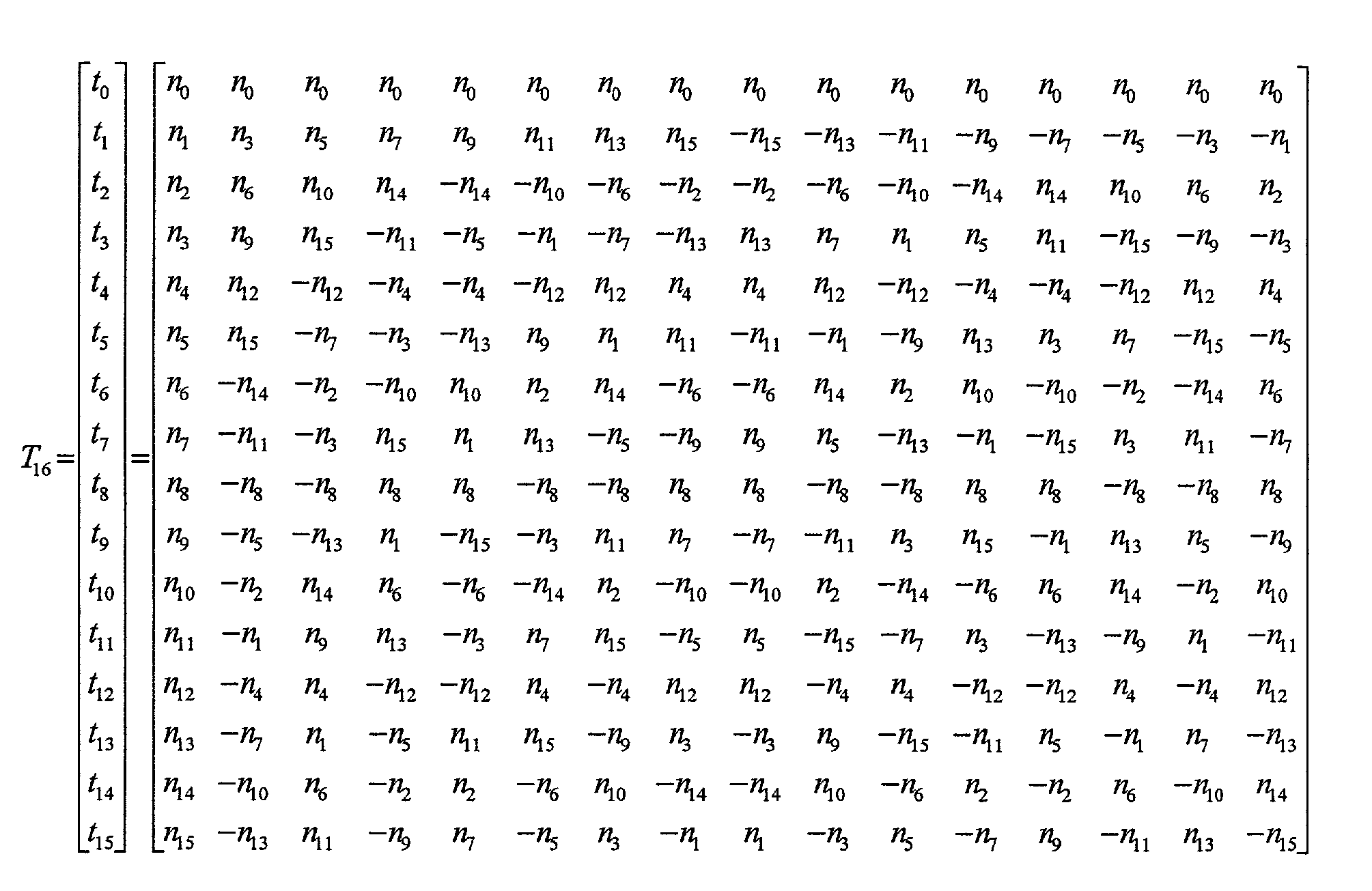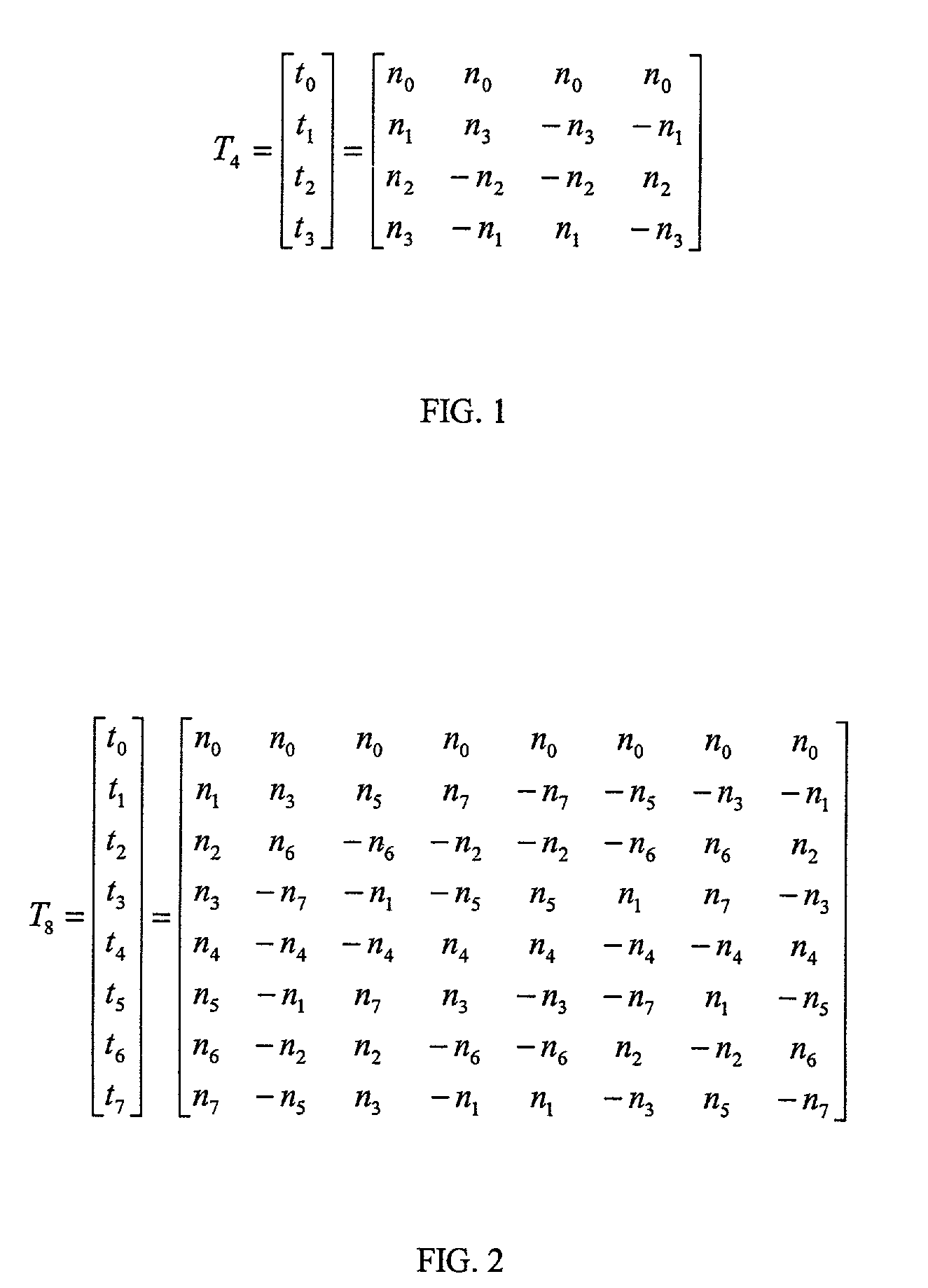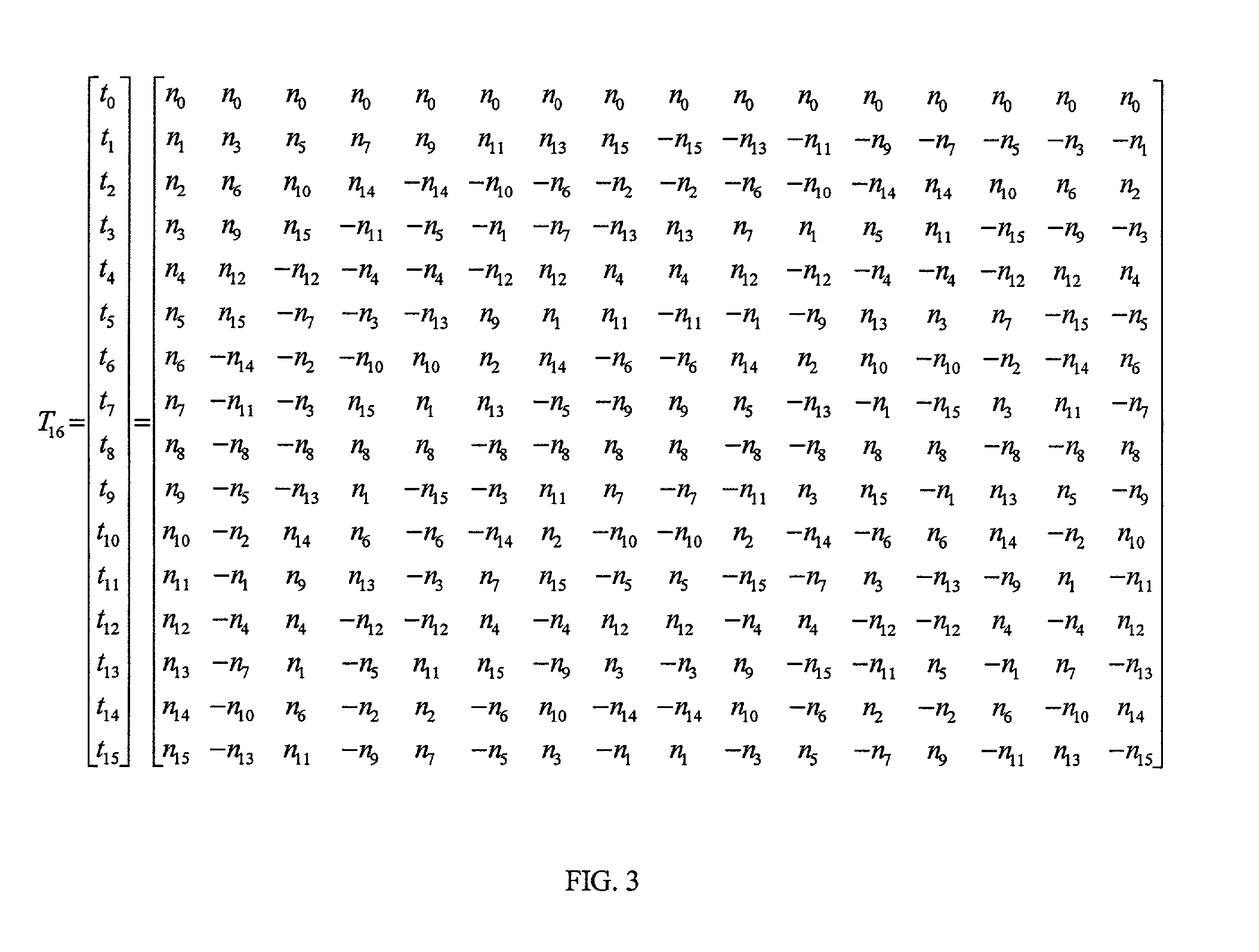Integer cosine transform matrix for picture coding
a transform matrix and picture technology, applied in the field of integer cosine transform matrix for picture coding, can solve the problem that none of these approaches has been able to guarantee coding reversibility, and achieve the effect of minimizing the frequency distortion in the transform matrix
- Summary
- Abstract
- Description
- Claims
- Application Information
AI Technical Summary
Benefits of technology
Problems solved by technology
Method used
Image
Examples
Embodiment Construction
[0010]Different sized blocks in an image can be coded with a discrete cosine transform. For example, 16×16, 16×8, 8×16, 8×8, 8×4, 4×8, and 4×4 marcroblocks can be transformed using horizontal and vertical transform matrices of size 4×4, 8×8, and 16×16. The macroblocks are transformed according to the following:
Cn×m=Tm×Bn×m×TnT,
where Bn×m denotes an image block with n columns and m rows. The terms Tn and Tm represent the horizontal and vertical transform matrices of size n×n and m×m, respectively. The term Cn×m denotes the cosine transformed n×m block.
[0011]An orthogonal 4×4 integer matrix Tm=T4 can be written based on a Hadamard transform as shown in FIG. 1. The values n0, n1, n2, and n3 represent integers. Matrix normalization requires the constraints shown in equation 1, where norm is an integer representing the normalization factor of the matrix. {n0=normn12+n32=2·norm2n2=normEQUATION(1)
[0012]The real DCT of the base vector ti is represented as di as shown in equation 2.
di=ti·D...
PUM
 Login to View More
Login to View More Abstract
Description
Claims
Application Information
 Login to View More
Login to View More - R&D
- Intellectual Property
- Life Sciences
- Materials
- Tech Scout
- Unparalleled Data Quality
- Higher Quality Content
- 60% Fewer Hallucinations
Browse by: Latest US Patents, China's latest patents, Technical Efficacy Thesaurus, Application Domain, Technology Topic, Popular Technical Reports.
© 2025 PatSnap. All rights reserved.Legal|Privacy policy|Modern Slavery Act Transparency Statement|Sitemap|About US| Contact US: help@patsnap.com



